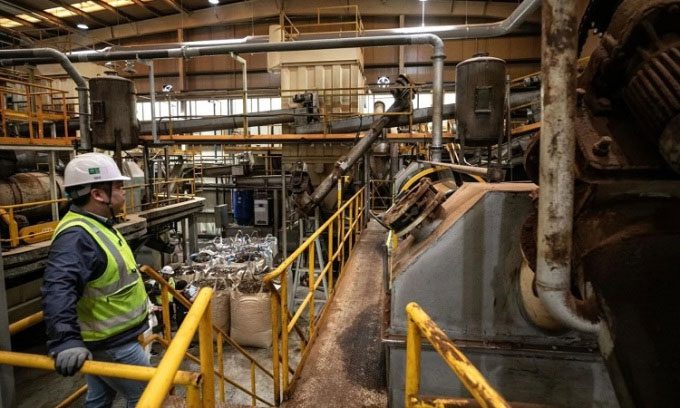South Korean authorities are implementing classification, processing, and recycling measures to convert nearly 100% of food waste into fertilizers, animal feed, and biogas, establishing a model for others to follow.
Located near the highway leading to the western gateway of Seoul, the Nanji Waste Treatment Center, where Choi Sung-ho works, primarily handles waste from toilets. However, the odor emanating from this facility comes from decaying food. This has caused tension between the center and nearby residents. In a city of 10 million inhabitants generating 2,500 tons of food waste daily, the role of the plant is essential, according to the Los Angeles Times.
Since South Korea banned food waste disposal in landfills in 2005, followed by a ban on dumping liquid by-products (known as leachate) into the sea in 2013, the country has operated a comprehensive organic composting program that recycles nearly all food waste into fertilizers, animal feed, or biogas fuel, similar to what is done at the Nanji Waste Treatment Center.
Each day, the plant processes approximately 130 tons of leachate from waste collection companies in the region. The liquid is poured into concrete tanks. Over a period of 15 to 30 days, microorganisms break down the leachate in a process called anaerobic digestion. The biogas produced during this process is collected and sold to a local company for heating homes in the area. “The process is similar to digestion in humans. We maintain the tanks at 36-37 degrees Celsius, similar to human body temperature,” Choi explains.

The success of the recycling program is the result of trial and error. (Photo: Jean Chung).
Food scraps collected at the Nanji Waste Treatment Center are stored in transparent yellow bags. This type of bag has been mandated in South Korea for disposing of food waste since 2013. By purchasing these bags from convenience stores or grocery shops, residents pay a fee for the food they throw away. The revenue from bag sales is collected by each district and used to offset part of the costs of transporting and processing food waste. “Throughout Seoul, the bag purchase fees cover about 40% of the total cost of food waste management, costing the city about $153 million annually,” said Jang Ji-ae, head of the local food waste management team.
The waste disposal process is familiar to every resident of Seoul, which involves removing all moisture and placing the filled trash bags in personal blue bins on the curb at dusk. In some apartment complexes, residents can skip the bags and dump food waste directly into electronic bins that automatically weigh and charge them. These measures encourage residents to monitor the amount of waste they generate. “They become aware of how much they are throwing away. This makes them uncomfortable,” Jang noted.
Subsequently, at processing facilities around the city, the waste in bags is dumped out and any foreign objects are removed. The remaining waste is compacted, dehydrated, and processed into fertilizers or animal feed, while the extracted liquid is sent to wastewater treatment plants like Nanji. With this process, South Korea currently recycles nearly 100% of food waste, a significant increase from just 2.6% in 1996.
The efficiency of South Korea’s food waste management system makes it a model for governments in other countries. Last year, Jang and colleagues conducted online consultations for the Tokyo government. In Japan, food waste is discarded with other waste and incinerated, but the Tokyo authorities are exploring recycling options.
In South Korea, separating food from regular waste began in the late 1990s. Intense urbanization led to population overload in the capital. Concurrently, rising living standards resulted in unprecedented waste generation during tough times. Neighborhoods had to coexist with overflowing landfills, leading to many inconveniences due to foul odors and flies. South Korea enacted a ban on food waste disposal in landfills in 2005, forcing residents to adapt to the separation of food scraps.
“It has been a trial and error process with many lessons learned,” said Kim Mi-hwa, president of the Korea Zero Waste Movement Network, an alliance of 180 environmental organizations collaborating with the government on the recycling program. “It wasn’t until 2013 that we could claim success.”
In the early days, many residents violated the law. Unaccustomed to collecting and separating food waste at home, some residents disposed of scraps in public trash bins. Local authorities had to offer rewards for reporting violations and penalize improper disposal. Additionally, Kim’s organization actively campaigned for nationwide compliance with the law.
The recycling program itself faced significant hurdles. The current method of processing food waste into fertilizers, animal feed, and biogas is the result of several failed experiments, such as feeding leftover food to ducks or composting in large-scale worm farms.
Under new regulations aimed at reducing high-carbon fuel sources, Seoul plans to expand biogas production, increasing from 7% of recycled food waste to 50% by 2026. To meet this goal, a new biogas production facility is being developed at Nanji.


















































